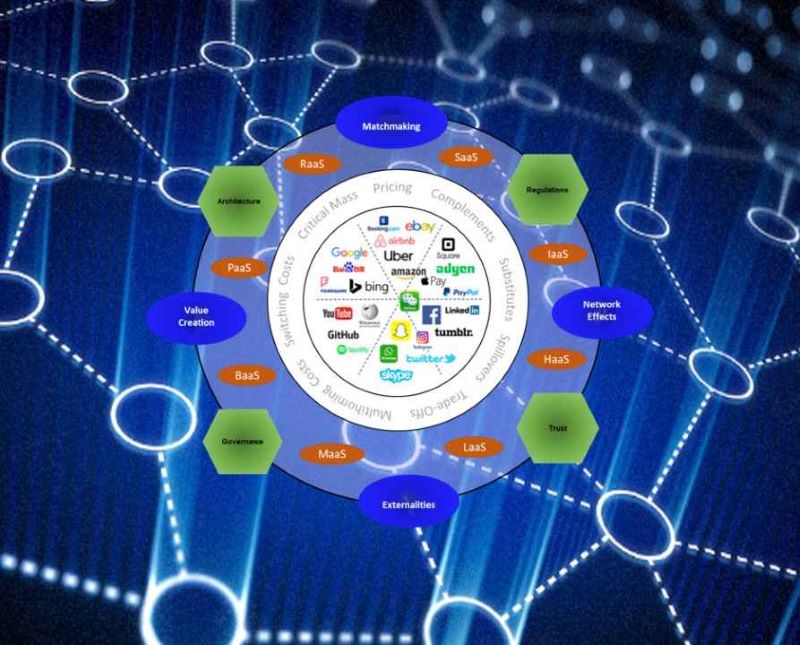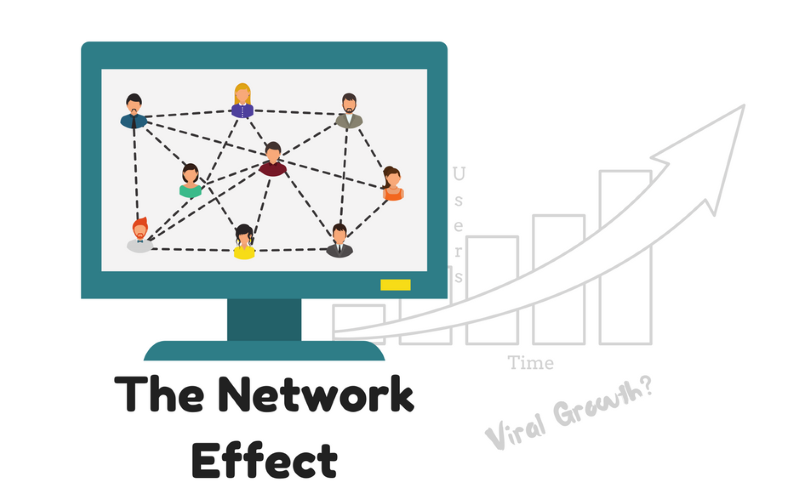Competition and innovation in the digital economy are like a dance driving progress forward. Without one, the other staggers. Imagine a world where each click, swipe, and tap on our devices edges us closer to a breakthrough. That’s where we are now. Tech startups battle fiercely; they upend old ways and set new rules. Each player, big or small, pushes the bar higher, forcing others to leap or fall behind. Ahead, we dissect the bold moves shaping our digital lives and the strategies that keep companies at the top. Dive in as we unlock the secrets that fuel the digital economy’s next big leap.
Understanding the Impact of Digital Transformation
The Role of Disruptive Technology in Shaping Markets
Think of a time when shops closed at six. You had to pay with cash. No more. Today’s shops are not just on streets. They’re online. And they never close. This change? It’s because of disruptive tech.
Disruptive technology makes old ways fade. Like streaming did to video tapes. It’s not just a shift. It’s an earth-shake for markets. Small companies can now fight giants. They use the web to reach people. They offer things that no one else does. Big companies must keep up or they lose.
Let’s look at a smart guy named Clayton Christensen. He saw this early on. He said new tech helps new players change the game. They start small but then grow big. They offer better, faster, or cheaper stuff. Like Netflix did to Blockbuster.
Now, everyone wants to be the next Netflix. They all chase after the newest big thing. It’s a race, fast and furious. And this race? It’s good for you and me. We get more choices. We find things we never knew we wanted. Smartphones. Apps. You name it.
Assessing the Growth of the Internet Economy
The internet economy? Think of it like a rocket. It blasted off in the ’90s. It’s not slowing down. It’s this huge space where ideas fly and cash follows. Forbes says it’s a chunk of the world economy. Not small. Big. Real big.
This growth, it’s wild. It’s not like anything we saw before. Each year, more people shop online. They work online. They even play online. This makes jobs. Millions of them. It pushes tech startups to jump in. They want their piece of the pie.
But it’s not a free lunch. No sir. Tech startups face tough fights. Competition is fierce. Everyone wants to be the king of the hill. And the hill? It’s not just local. It’s global.
Online market dynamics shape how we buy and sell. If you’ve got something to sell, the internet is your stage. Your audience is the world. But with great power comes great challenge. You face rivals from everywhere. To stand out, you need to be clever.
You’ve got to nail down what makes you special. Maybe it’s virtual goods. Maybe it’s a super app. What matters is giving people what they need. And they need it easy and safe.
So yes, this digital transformation? It’s huge. It touches everything. How we live. How we work. How we play. It’s the soil where ideas grow into mighty oaks. And it’s not stopping. Now is the time to dive in and find your spot in this bold new world.
Analyzing the Competitive Landscape of Tech Startups
Addressing the Dynamics of Online Market Competition
In the digital economy, the online market moves fast. Each day, tech startups pop up, ready to take on the giants. What decides if a startup sinks or swims? It’s all about knowing the digital battlefield. In this arena, fierce competition is the norm.
Startups have to be agile, smart, and very creative. They tackle issues like internet economy growth and fight to make a mark. It’s like David and Goliath, but in the modern world. We witness giants being challenged by gutsy new tech heroes. They jump into the game with fresh ideas and unique tech tools.
In short, they ride on the latest disruptive technology trends. This helps them to stand out among digital platforms rivalry. They’re up against e-commerce giants, media powerhouses, and everyone in between. But it’s not just other companies; it’s the game’s rules too. That means facing fintech innovation challenges and the legal stuff: copyright rules, privacy concerns, and cyber safety.
One big question stands out: How can tech startups even start to compete? First, they keep tabs on online market dynamics. Trends can make or break your market day. They also must embrace things like big data. It’s a treasure trove that tells them what customers really want.
Then, there’s AI. It’s not science fiction; it’s a tool they use right now. It helps predict buyer moves, create cool products, and cut costs.
But wait, there’s more. Tech startups can’t forget about people. That’s where social media steps in. A simple like or share can mean the world. It could lead to a viral hit or bring a giant down a notch.
The Influence of Network Effects on Startup Success
Now, let’s talk about some real magic: network effects. It’s like a snowball: bigger as it rolls. When a startup gets more users, it gets even more attractive to new ones. That’s because people want to be where people are. It’s about being part of a crowd.
Think about a phone with no one to call. Not very useful, right? But when others join in, boom! You’ve got a network that’s alive and kicking. For a startup, this network effect can mean everything. It turns small apps into everyday needs.
Virtual goods, digital services, they all thrive on network effects. It’s not just about the product. It’s about the community around it. Users bring in users, and suddenly, the world sees a new king in town.
But there’s a catch. With every powerful tool, comes a challenge. As love for the network grows, so does the battle for control. Sometimes, rivals play dirty. They use their power to lock in users or make it tough for starters to get a fair shot.
Yet, through all this, opportunity glows. The right idea, at the right time, can cut through global digital trade barriers. It can turn a small startup into a worldwide hit. That’s the promise of the digital economy. It’s always changing, always offering a new chance to leap ahead.
Tech startups don’t just add to the competition. They stir the pot, push for better, and keep the giants on their toes. They fuel innovation. It’s not easy, but boy, is it exciting.
Strategies for Navigating Fintech Innovation Challenges
Overcoming Regulatory Hurdles in Finance Technology
Finding your way through finance laws can be tough. These laws make sure that money and personal info stay safe. So, if you’re making new money tech, you need to know the rules well. You wouldn’t want to start a football game without knowing how to score, right? Same goes for fintech. To win, learn the rules by heart and play smart.
Think of laws as a fence. The fence keeps things safe, but you can still play ball. You build trust when customers know you play by the rules. And trust is like a golden ticket in money-talk. Plus, this trust helps you to get more people to play ball (a.k.a customers).
Be like a scout. Always look ahead. Watch for changes in laws so you’re ready always. Tech and laws are like two dancers. Tech moves fast, but laws can be slow. You’ve got to keep an eye on both. That way, your tech can be like a cool new dance everyone wants to learn.
Utilizing Blockchain for Enhanced Business Efficiency
You’ve probably heard of blockchain. It’s like a digital ledger that everyone can see, but no one owns. It’s super safe, too. Each block in the chain is like a locked box full of secrets. Once a box is closed, it can’t be messed with. This is great for business because it means fewer mistakes, and that can save time and money.
Imagine you have a set of building blocks. Each block is important and has a special code. If you change one block, everyone can tell. This keeps everyone honest. It’s like having a friend who always tells the truth.
Blockchain is not just for Bitcoin. All kinds of businesses can use it. It’s like a Swiss Army knife for the digital world. Banks, farms, or even music folks can use it. They track stuff, make things smoother, and sometimes even cut out the middleman.
Let’s take a super quick trip. You buy bananas from a store. With blockchain, you can see where those bananas came from, all the way back to the tree. Now, that’s what you call clear as glass!
It can also speed things up. Say goodbye to waiting days to get paid. With blockchain, you can get your cash quick, like snapping your fingers.
In summary, fintech’s busy world is full of hurdles and opportunities. The trick is to keep learning and stay ahead of the game. Play within the rules and harness new tools like blockchain. That’s how you make the digital economy zoom ahead, just like a rocket!
The Power Struggle in Digital Platform Economies
The Battle of Digital Platforms: Rivalry and Market Share
Imagine a big game of king of the hill. Digital platforms are all over it. They fight to stay on top. It’s about who can grab an edge and keep it. Big names we all know are deep in this fight.
Users like you and me give these platforms power. The more we use them, the stronger they get. This is the “network effect.” It means a product gains more value as more people use it. In short, huge user numbers mean huge power.
But how do they keep us coming back? They get to know us—really well. That’s where big data steps in. The more a platform knows, the better it can serve up what we want.
Even small guys join the fray, using smart tech to outwit the big ones. Tech startups throw their hats in the ring, often zooming by giants in innovation. They must be quick, smart, and know the ropes of the digital world.
The key to winning is not just being big but also being smart. Firms use cutting-edge AI to predict what we’ll buy or watch. They build algorithms that learn from piles of data. This helps them sell more things or show ads we care to see.
Security matters too. Trust is everything. No trust, no users. No users, no win. Cybersecurity keeps our info safe, and that’s no small feat. It’s as important as the cool new features they roll out.
IP rights also come into play. Who owns what? Ideas and content are precious. They need guarding in the messy web. It’s a tough job, but someone’s got to do it to keep the game fair.
It’s a battlefield, alright. Everyone’s looking for the next big trick to rise to the top.
Implementing Algorithm-Driven Models for Competitive Advantage
Now, let’s go deeper. How do these digital heroes win? They use algorithm-driven business models. Simply put, they make machines think—like us but faster and with less sleep.
These algorithms sort through heaps of data. They learn, they adapt. This is no small thing. It’s game-changing.
Let’s say you run a shoe shop online. You want to sell more shoes. You let algorithms peek into shopping patterns. They learn. Soon, they predict the kind of shoes Jane from Ohio might like.
With smart algorithms, you offer Jane those red sneakers she’s been eyeing. She’s happy. She buys them. You’re happy. It’s a win-win powered by AI.
The upshot? Companies that bend tech to their will, they make the rules. They adapt faster, know their users better, and deliver quicker. They’re the ones making waves and turning heads.
For firms, it’s go smart or go home. They up their game to offer exactly what we want, even before we hit search.
Innovation isn’t just a buzzword here. It’s the fuel that keeps this race exciting. It pushes digital platforms to do more, be more, and wow us endlessly. Buckle up; this ride only speeds up.
In this post, we’ve dived into the digital world’s big waves – disruptive tech, the growing internet economy, and tech startup battles. We saw how new tech shapes markets and boosts the internet’s money-making power. Then, we looked at startups, their fight to win online, and how they use network effects.
Next, we tackled fintech – cutting through red tape and using blockchain to stay quick and smart. Finally, we explored the digital platform face-off and how smart algorithms give the upper hand.
So, here’s my final take: Staying ahead means knowing the game and playing it better than the rest. Use tech smart, keep on top of rules, and always look for the next trick to up your game. Stay sharp, stay hungry, and keep pushing – that’s how you’ll win in the digital age.
Q&A :
How does competition drive innovation in the digital economy?
Competition in the digital economy prompts businesses to innovate as they strive to gain a competitive edge. Through novel technologies, improved services, and efficient processes, companies can attract more customers and expand their market share. This dynamic environment challenges firms to continuously improve and adapt, leading to breakthroughs that can redefine industry standards.
What are the challenges to maintaining competition in the digital marketplace?
Preserving competition in the digital marketplace is complex due to rapid technological advancements, network effects, and the dominance of large platforms. Regulators face the task of fostering a fair competitive landscape without stifling innovation. Challenges include ensuring data portability, preventing anti-competitive behaviors, and maintaining a fair and open internet.
Can government regulation promote competition and innovation in the digital economy?
Government regulation can potentially promote both competition and innovation in the digital economy by creating a level playing field. By implementing policies that prevent monopolistic practices and encourage new entrants, governments can stimulate innovation. However, overregulation may inadvertently hinder growth, so a balanced approach is crucial.
How do startups contribute to innovation in the digital economy?
Startups are often at the forefront of innovation in the digital economy due to their agility and risk-taking ethos. They can disrupt established markets with cutting-edge technologies and business models, forcing larger incumbents to innovate to maintain their competitive advantage. Startups also introduce diversity in services and products, contributing to a vibrant digital ecosystem.
What role do open standards and interoperability play in competition and innovation?
Open standards and interoperability are key enablers of competition and innovation in the digital economy. They allow for seamless integration between different technologies and platforms, reducing barriers to entry for new competitors. By facilitating compatibility and encouraging a wider adoptive base, they spur innovation and provide consumers with more choices.






